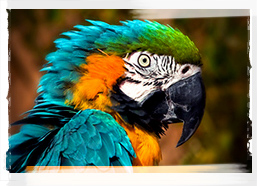An Introduction to Colombia
The territory of what is now Colombia was originally inhabited by indigenous peoples including the Muisca, Quimbaya, and Tairona. The Spanish arrived in 1499 and later established the Viceroyalty of New Granada covering the whole north of the continent, with its capital at Bogot�. Independence from Spain was won in 1819, but by 1830 'Gran Colombia' had collapsed with the secession of Venezuela and Ecuador. What is now Colombia and Panama emerged as the Republic of New Granada, and finally became the Republic of Colombia in 1886. Panama seceded in 1903. See full country profile.Latest Research News from Colombia

GOVERNMENT: republic; executive branch dominates government structure
AREA: 1,138,910 sq km
POPULATION: 44,725,543 (July 2011 est.)
MAJOR LANGUAGE: Official Language: Spanish

Some business and general info
The Market Research Industry
Trade and Industry in Colombia
Unlike some of its neighbours Colombia has won Olympic gold, 'though just one - collected by Maria Isabel Urratia in Women's 75kg Weightlifting at Sydney 2000.
Go to next country
The territory of what is now Colombia was originally inhabited by indigenous peoples including the Muisca, Quimbaya, and Tairona. The Spanish arrived in 1499 and later established the Viceroyalty of New Granada covering the whole north of the continent, with its capital at Bogot�. Independence from Spain was won in 1819, but by 1830 'Gran Colombia' had collapsed with the secession of Venezuela and Ecuador. What is now Colombia and Panama emerged as the Republic of New Granada, and finally became the Republic of Colombia in 1886. Panama seceded in 1903.
Colombia boasts the first constitutional government in South America and two of the oldest surviving political parties, but since the 1960s has been constantly troubled by armed conflict between government forces, left-wing insurgents and right-wing paramilitaries. Fuelled by the cocaine trade - Colombia is world's largest producer - this escalated dramatically in the 1980s but has scaled down since 2000.
GDP: $435.4 billion (PPP - 2010 est.), $9,800 per capita (2010 est.)
Religions Roman Catholic 90%, other 10%
Currency: Peso (COP) - $1 = COP 2,842
Telephone Code: +57
Research Industry
Colombia's MR industry is one of the fastest growing in South America - reporting a 9% growth in 2010 over 2009, with a turnover of $USD 140m. That ranks the industry in Colombia 26th in the world.Colombia's economic performance has been aided by liberal reforms introduced in the early 1990s and continued during the presidency of �lvaro Uribe, whose policies included measures designed to bring the public sector deficit below 2.5% of GDP. Wealth in Colombia is relatively unevenly distributed: in 2003 the poorest 20% of the population had a 2.5% share of income/consumption, and almost a fifth (17.8%) live on less than $2 a day.
Cocaine aside, Colombia exported $40.78bn worth of goods in 2010, 42% going to the USA, and much of the rest to the EU, China and Ecuador. Key commodities were petroleum, coffee, coal, nickel, emeralds, apparel, bananas and cut flowers. The USA also accounts for more than a quarter of imports, with China, Mexico, Brazil and Germany also major partners. Industrial equipment, transport equipment, consumer goods, chemicals, paper products, fuel and electricity made up the bulk of just under $39bn imported in 2010.
Email me:
laurence@mrweb.com

